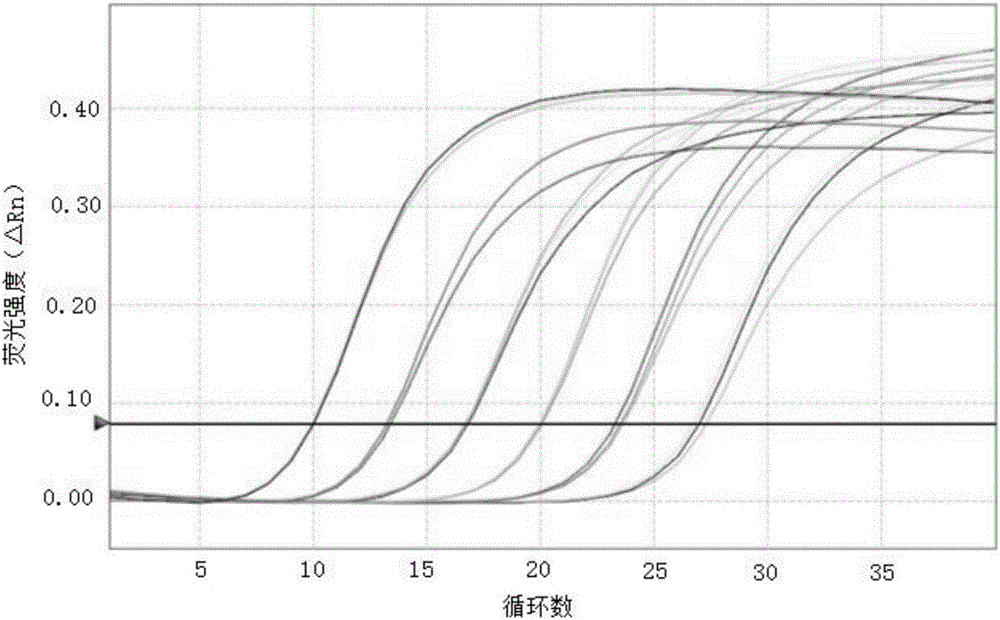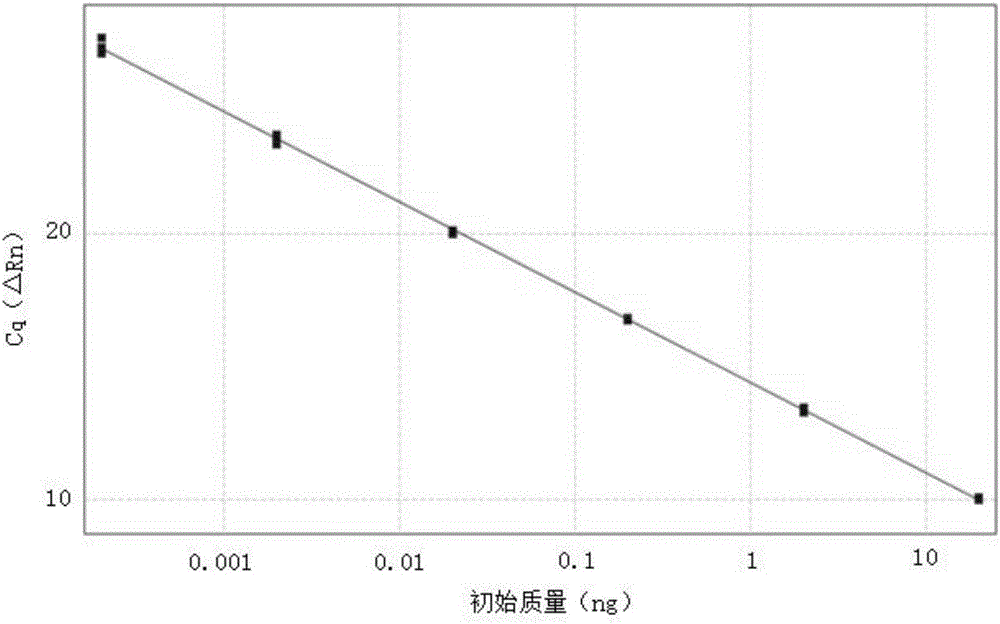Method for preparing cfDNA library qPCR quantification standard substance
A quantitative standard product and library technology, applied in biochemical equipment and methods, microbial measurement/testing, etc., can solve problems such as tailing peaks, not well representing the real situation of cfDNA, and expensive prices
- Summary
- Abstract
- Description
- Claims
- Application Information
AI Technical Summary
Problems solved by technology
Method used
Image
Examples
Embodiment 1
[0040] Example 1 Extraction of cfDNA
[0041] Use the QIAamp Circulating Nucleic Acid Kit (Qiagen) to extract cfDNA from 10ml of peripheral blood. The specific steps are as follows:
[0042] 1. Use K2EDTA 10ml vacuum blood collection tube (BD) to collect 10ml of peripheral blood from healthy people, and separate plasma within 4 hours.
[0043] 2. Plasma separation step: centrifuge at 1600g for 10min, take the supernatant, and be careful not to suck the white blood cells in the middle layer (after this centrifugation, the supernatant is plasma, the middle layer is white blood cells and platelets, and the lower layer is red blood cells); the supernatant Centrifuge at 16,000g for 10 minutes to remove residual cells, and do not absorb the white blood cells at the bottom; the separated plasma is stored in separate tubes at around -80°C.
[0044] 3. Take out the plasma from the -80°C refrigerator, thaw it on ice, centrifuge at 16000g for 10min, and transfer the supernatant.
[004...
Embodiment 2
[0050] Example 2 cfDNA library construction
[0051] Use the Kapa Hyper Prep Kit Illumina kit for cfDNA library construction, the specific steps are as follows:
[0052] 1. End repair and add "A"
[0053] First prepare 7 μl of end repair plus A base buffer and 3 μl of end repair plus A base enzyme mixture. After mixing, gently pipette 10 times with a gun to mix well, detach lightly, and place on ice. Then add the cfDNA sample extracted in Example 1 to 50 μl with ddH2O, add it to the PCR reaction tube, and incubate according to the following conditions: 20°C, 30min; 65°C, 30min; 4°C, keep.
[0054] 2. Add Index connector
[0055] First prepare a reaction solution containing 30 μl of ion buffer and 10 μl of DNA ligase, gently pipette 10 times with a gun to mix, lightly detach, and add to a reaction tube of 60 μl of the reaction product of end repair and A base addition. Then add Index linker reaction solution (10 μM) and PCR grade water to the reaction tube to a final volume ...
Embodiment 3
[0066] Example 3 Accurate Quantification of cfDNA Library
[0067] Using the third-generation digital PCR QX200 Droplet Digital PCR system and supporting reagent ddPCR TM The Library Quantification Kit for Illumina performs precise absolute quantification of cfDNA libraries.
[0068] 1. First, according to Table 1, dilute the cfDNA library with TE buffer, and prepare a mixture containing 10 μl of 2XddPCR probe mixture, 1 μl of 20X ddPCR library quantitative reaction solution and 5 μl of DNase and RNase-free water liquid.
[0069] Table 1 Gradient dilution ratio table
[0070]
[0071] 2. Set the above dilution ratio to 10 -6 、10 -7 、10 -8 、10 -10 The samples were detected in a 96-well plate, and 16 μl of the mixed solution and 4 μl of the diluted library were added to each reaction well, and 3 replicates were performed, and 3 replicates of NTC were added to the same plate. Then parafilm, mix well and centrifuge briefly.
[0072] 3. Operate according to the instructi...
PUM
| Property | Measurement | Unit |
|---|---|---|
| concentration | aaaaa | aaaaa |
Abstract
Description
Claims
Application Information
 Login to View More
Login to View More - R&D
- Intellectual Property
- Life Sciences
- Materials
- Tech Scout
- Unparalleled Data Quality
- Higher Quality Content
- 60% Fewer Hallucinations
Browse by: Latest US Patents, China's latest patents, Technical Efficacy Thesaurus, Application Domain, Technology Topic, Popular Technical Reports.
© 2025 PatSnap. All rights reserved.Legal|Privacy policy|Modern Slavery Act Transparency Statement|Sitemap|About US| Contact US: help@patsnap.com



